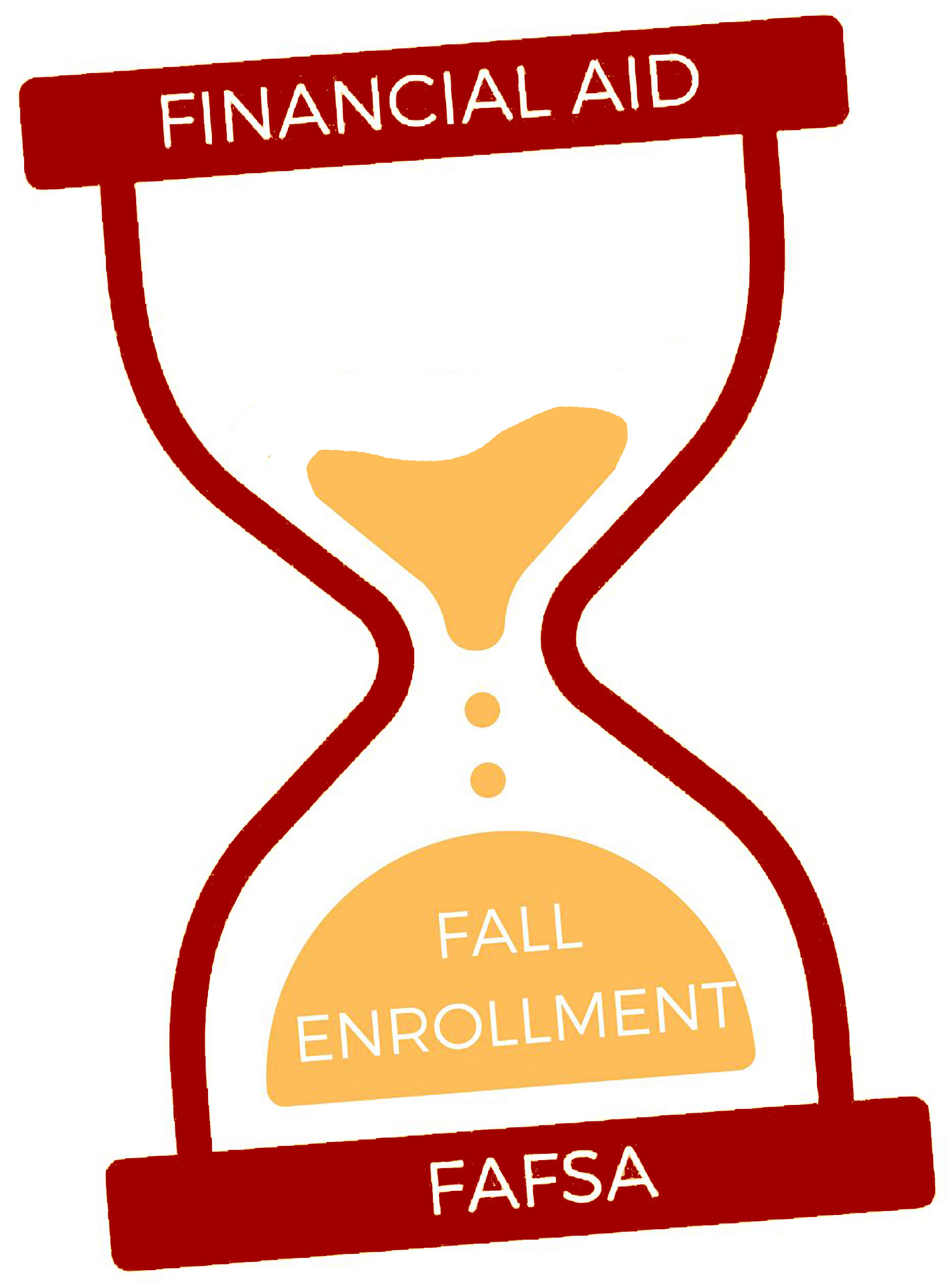FAFSA delays create uncertainty for students, university

Applying for college is no easy task, especially when it comes to paying tuition. Resources such as scholarships and financial aid are potential game changers when it comes to having the funds necessary for higher education and many applicants benefit from these programs.
The total amount of financial aid undergraduate and graduate students received was $240.7 billion for the 2022-23 financial aid year, according to research.collegeboard.org. This included grants, federal loans, federal education tax benefits and federal work-study. Additionally, the average aid for a full-time student was $15,480 per undergraduate student, and $28,300 per graduate student, with the total amount of grant aid for both being $145.3 billion. Additionally, according to usnews.com, a 2023 survey found for a typical family, scholarships and grants covered 29% of college costs in the 2022-2023 aid year, which is up from 26% in 2021-2022.
As the 2023-24 school year draws to a close, the application 2024-25 deadline for the Free Application for Federal Student Aid (FAFSA) grows closer. FAFSA’s purpose is to assist students in covering their college tuition through federal student aid. According to the Lumina Foundation, FAFSA was created in 1992. It replaced the Common Financial Aid Form of 1986 and became one of the most recommended forms to receive financial aid from the Commission on the Future of Higher Education in 2006.
In the past 30 years since its formation, students received significant amounts of financial aid. In a statistic from the National Center for Education, the average grant and scholarship aid full-time students received on four-year campuses for the 2019-20 aid year was $14,080.
It is critical for universities to have the FAFSA applicant information as it can help match aid qualifications with future students. However, this task has been severely pushed back.
As of February, 2024, FAFSA forms have been delayed throughout the country. According to USA Today, the Biden Administration announced colleges would not receive any form information until the middle of March at the earliest due to The Department of Education not adjusting income for families dealing with inflation impacts. This prevents financial aid programs on college campuses from accessing any FAFSA forms for incoming students, and has the real possibility of applicants not being able to receive any offers for financial aid until April or May, when this information was promised by late January.
Natalie Butaud, Lamar University’s assistant director of customer service, says the biggest issue is the fact that they haven’t received any student FAFSAs at all.
“Currently, we are waiting to receive the applications from the Department of Education to be able to make award packages for students,” Butaud said. “It’s been hard, but every university and college is in the same boat. It’s nice to know that Lamar is not the only one facing these issues. It’s (also) unfortunate for students as they’re trying to pick the right school for them based off of their money that they’re going to receive, and right now they’re not able to do so.

“If a student completes their FAFSA, and their parent or guardian signs it, (with) the student, (the website) just shows pending. It just stays in pending status until they finally start sending them out.”
Many students who have filled out forms for the up-coming academic year have reported their experiences online, saying they have had issues with the website not working and receiving emails stating their information will be reviewed sometime in March. This is not the first time issues with the FAFSA have occurred. If anything, the current issues are a consequence of The Department of Education’s desire to change the form.
When Biden first assumed the presidency in 2020, he said one of the big goals for his administration was to fully commit to the overhauling FAFSA. In December 2020, The FAFSA Simplification Act was passed in Congress, which worked to simplify the list of requirements for applicants to qualify for financial aid. According to insidehighered.com, the FAFSA questions were reduced from 100 to less than 40. Additionally, the act expanded the eligibility for the Pell Grant, allowing incarcerated students to apply for it after a 26-year ban, and it made receiving financial aid more accessible. The initial deadline for these changes was October 2022, but the beginning of the process was slow as the government made reopening of schools after the COVID pandemic a priority.
It also didn’t help that during this time the Department of Education, with the passing of the American Rescue Plan Act in March 2021, was in charge of giving COVID relief funds to K-12 districts, nonprofits and higher education institutions. Student debt relief was also a big part of Biden’s platform. These factors forced the department to extend the deadline to Jan. 1 of this year.
The Department of Education just managed to get everything in by Dec. 30, but the FAFSA website was reportedly inaccessible until Jan. 8. As a result of the changes, technical issues have arisen which currently remain unresolved. These include students who incorrectly select “Eligible Noncitizen” on the form being prevented from completing and submitting the form after correction; parents being unable to access the form despite starting applications on behalf of the student; and the FAFSA application status reading “In Progress” even when the user is ready to submit the form.
Some colleges, including Lamar University, have already pushed the May 1 cutoff for financial aid.
“I don’t believe we’ve had discussion about extending it further, but I know that we’ll continue accepting FAFSAs,” Butaud said. “We’re not going to deny someone wanting to come to the university because of these issues that have been happening.”
There is a real risk of students not being able to afford to attend college at all, as some rely on FAFSA student aid to cover tuition.
“I’m hoping that it doesn’t affect anyone after the next couple of weeks and that we can receive all of the FAFSA information,” Butaud said. “But since there is a holdup, it may affect our incoming class, or our incoming freshmen or transfer students that are wanting to attend (but) are holding out to make their decision based off of what their award package will be. Typically, a lot of students have already made their decisions on what school they want to go to, but right now, they’re hesitating a little bit more than usual because they don’t know what kind of money they’re going to receive at our school versus Sam Houston, SFA, Texas State A&M — they’re kind of waiting.”
The current problems are causing fewer students to apply for financial aid, according to a CNBC report, with a current 15% decline this year. As of early March, only a small percentage of the usual 17 million students have filled out the required forms, even though most students strongly benefit from the FAFSA qualifications.

This mistake from the Department of Education has cost $1.8B in what would have been federal student aid, according to LAist, part of Southern California Public Radio. It’s unclear whether or not this incident will cause a decrease in enrollment for fall 2024, but the act of simplifying the financial aid forms is anything but simple.
“I can’t say that it will affect enrollment because I think students (who) come to Lamar want to come to Lamar,” Butaud said. “I think it may affect the time that they get enrolled in. They may not be getting advised as quickly, and (enrollment) might be a little bit later in the summer, rather than right in April or May.”
What started as an update to FAFSA to make the qualifications for receiving financial aid easier has turned into a political mess which had been slowly steamrolling for the past four years. Once these issues are resolved, the Department of Education will have their work cut out to prevent future mistakes like this from happening.
In the meantime, students are in limbo with many unsure of their educational future.
